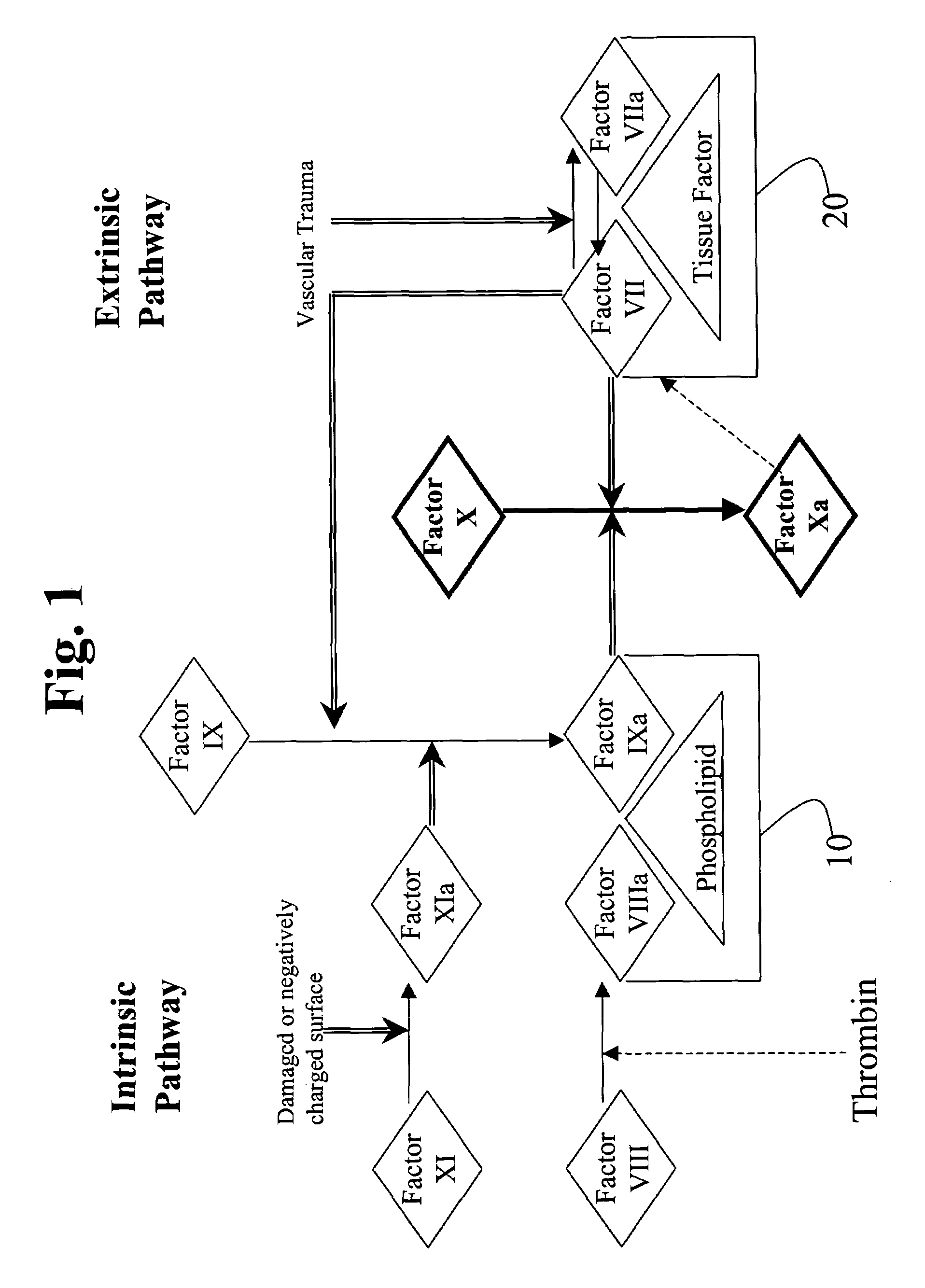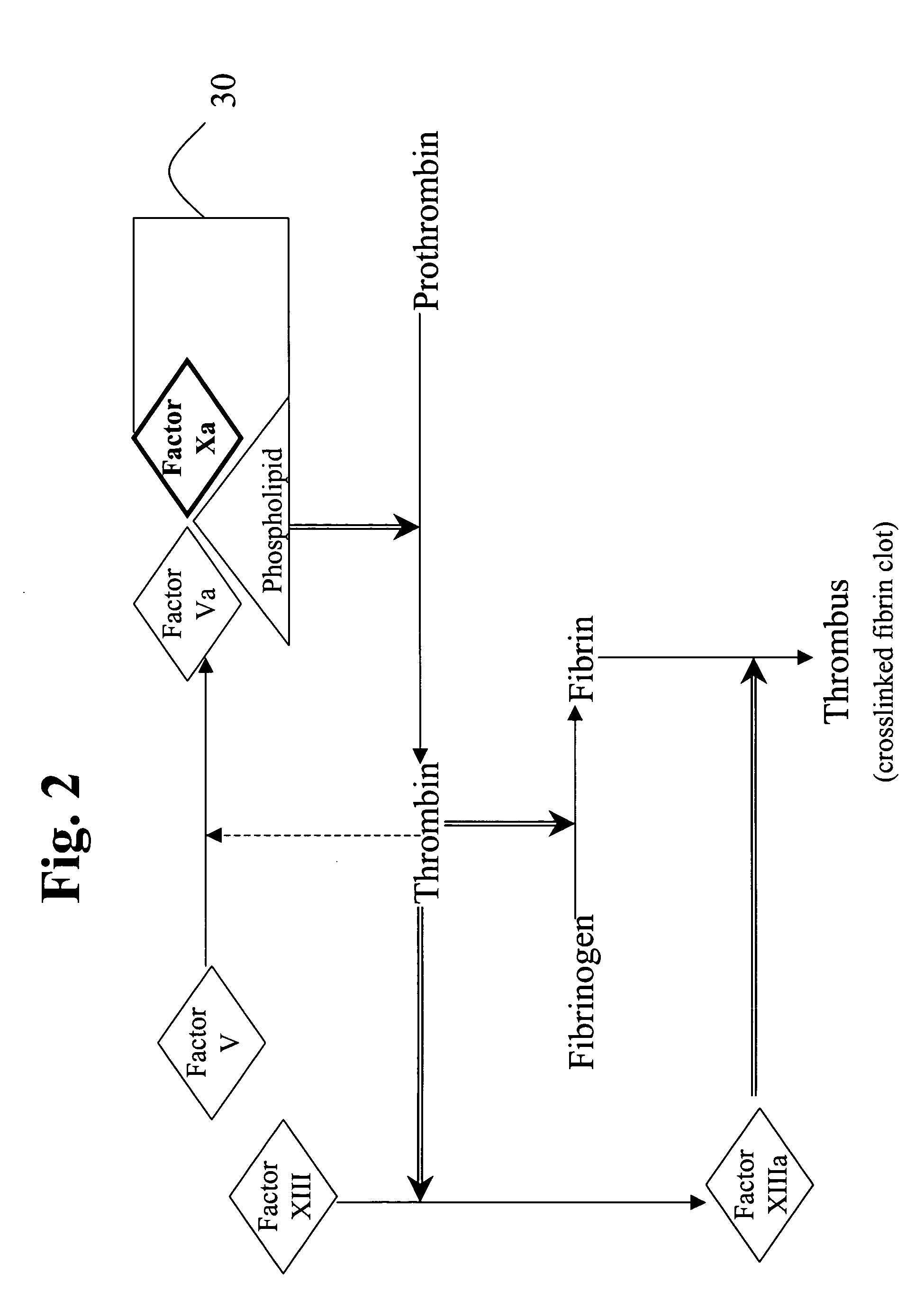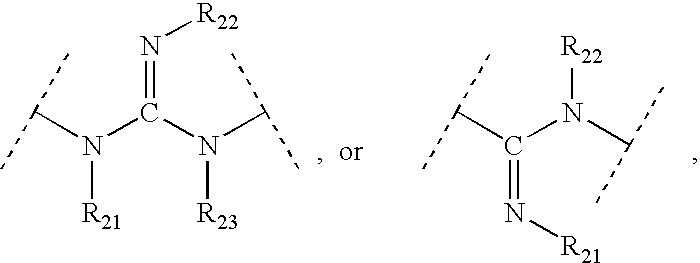Aryl and heteroaryl compounds, compositions, and methods of use
a technology applied in the field of aryl and heteroaryl compounds and compositions, can solve the problems of reducing blood flow to the affected extremities, pulmonary embolism, and excessive bleeding or thrombosis, and causing widespread organ failur
- Summary
- Abstract
- Description
- Claims
- Application Information
AI Technical Summary
Benefits of technology
Problems solved by technology
Method used
Image
Examples
example 1
(2S)-[5-Bromo-2-(4-trifluoromethylbenzyloxy)-benzoylamine]-3-(2′-phenoxybiphenyl-4-yl)-propionic acid
[0535]5-Bromo-salicylic acid (2.16 g, 10 mmol) was first transformed into 2-acetyl-5-bromo-salicylic acid (252 g) with acetyl chloride (2.34 g, 30 mmol) and pyridine (3.95 g, 50 mmol) in DCM. The above acid (1.29 g, 5.0 mmol) was converted into acid chloride by using oxalyl chloride (1.97 g, 15 mmol) and catalytic amount of DMF in DCM, then 2-phenoxy-biphenyl alanine (1.45 g, 5.0 mmol) and DIEA (0.77 g, 6.0 mmol) were added to the acid chloride to form (2S)-[5-bromo-2-hydroxybenzoylamine]-3-(2′-phenoxybiphenyl-4-yl)-propionic acid methyl ester (1.92 g). The above methyl ester (50 mg, 0.092 mmol) was reacted with 4-trifluoromethyl benzyl bromide (44 mg, 0.18 mmol) as described in general procedure H to provide (2S)-[5-bromo-2-(4-trifluoromethylbenzyloxy)-benzoylamine]-3-(2′-phenoxybiphenyl-4-yl)-propionic acid methyl ester (55 mg). The ester was hydrolyzed following general procedure ...
example 2
(2S)-(5-Bromo-2-heptyloxy-benzoylamino)-3-[2′-(4-trifluoromethyl-phenoxy) -biphenyl-4-yl]-propionic acid
[0537]5-Bromo-2-heptyloxy-benzoic acid was prepared by reacting 5-bromo-2-hydroxy-benzoic acid methyl ester (1.0 g, 4.32 mmol) with iodoheptane (1.46 g, 6.49 mmol) as per general procedure H with potassium carbonate (1.5 g, 10.8 mmol) added. The ester thus obtained was subjected to hydrolysis as per general procedure C to yield the 5-bromo-2-heptyloxy-benzoic acid (0.950 g).
[0538](2S)-Amino-3-(2′-hydroxy-biphenyl-4-yl)-propionic acid was prepared from 4-bromophenylalanine (5.0 g, 20.48 mmol), 2-hydroxyphenylboronic acid (4.23 g, 30.72 mmol) and Pd (PPh3) 4 (2.36 g, 2.038 mmol) as per procedure D to yield the corresponding amino acid which was further esterified with anhydrous MeOH containing 2-3 ml of HCl to yield the corresponding HCl salt of the (2S)-amino-3-(2′-hydroxy-biphenyl-4-yl)-propionic acid methyl ester (5.0 g).
[0539]5-Bromo-2-heptyloxy-benzoic acid (0.231 g, 0.738 mmol...
example 3
(2S)-(5-Chloro-2-heptyloxy-benzoylamino)-3-(4′-trifluoromethoxy-biphenyl-4-yl)-propionic acid
[0542]5-Chloro-2-hydroxy-benzoic acid (2.5 g, 28.97 mmol) was coupled with 2-amino-3-(4-bromo-phenyl)-propionic acid methyl ester hydrochloride (4.26 g, 28.96 mmol) with HBTU (6.59 g, 34.76 mmol) and diisopropylethylamine (8 ml, 86.9 mmol) as per general procedure A to yield the corresponding 3-(4-bromo-phenyl)-(2S)-(5-chloro-2-hydroxy-benzoylamino)-propionic acid methyl ester.
[0543]The above hydroxy compound (0.500 g, 1.21 mmol) was then alkylated with heptyliodide (0.410 g, 1.815 mmol) and potassium carbonate (0.050 g, 3.025 mmol) as per general procedure H to yield the 3-(4-bromo-phenyl)-(2S)-(5-chloro-2-heptyloxy-benzoylamino)-propionic acid methyl ester (0.500 g).
[0544]The title compound was then prepared from 3-(4-bromo-phenyl)-(2S)-(5-chloro-2-heptyloxy-benzoylamino)-propionic acid methyl ester (0.090 g, 0.176 mmol) and trifluoromethyl boronic acid (0.067 g, 0.352 mmol) with Pd (PPh3...
PUM
| Property | Measurement | Unit |
|---|---|---|
| temperature | aaaaa | aaaaa |
| temperature | aaaaa | aaaaa |
| temperature | aaaaa | aaaaa |
Abstract
Description
Claims
Application Information
 Login to View More
Login to View More - R&D
- Intellectual Property
- Life Sciences
- Materials
- Tech Scout
- Unparalleled Data Quality
- Higher Quality Content
- 60% Fewer Hallucinations
Browse by: Latest US Patents, China's latest patents, Technical Efficacy Thesaurus, Application Domain, Technology Topic, Popular Technical Reports.
© 2025 PatSnap. All rights reserved.Legal|Privacy policy|Modern Slavery Act Transparency Statement|Sitemap|About US| Contact US: help@patsnap.com



